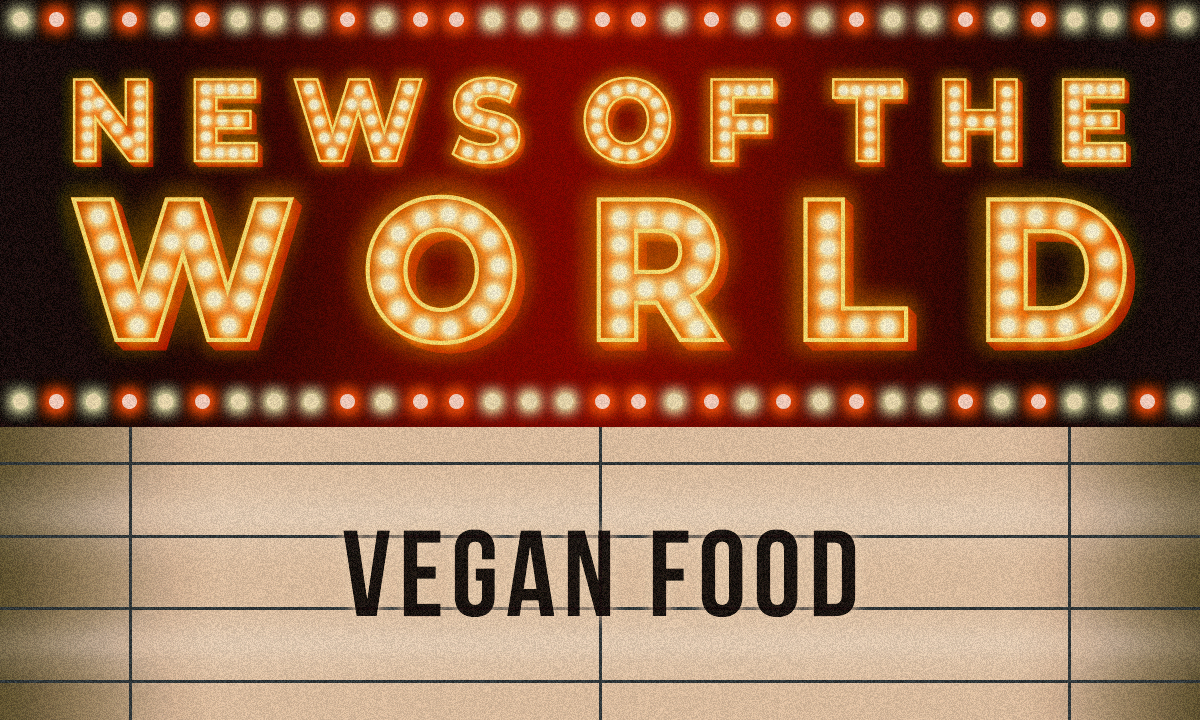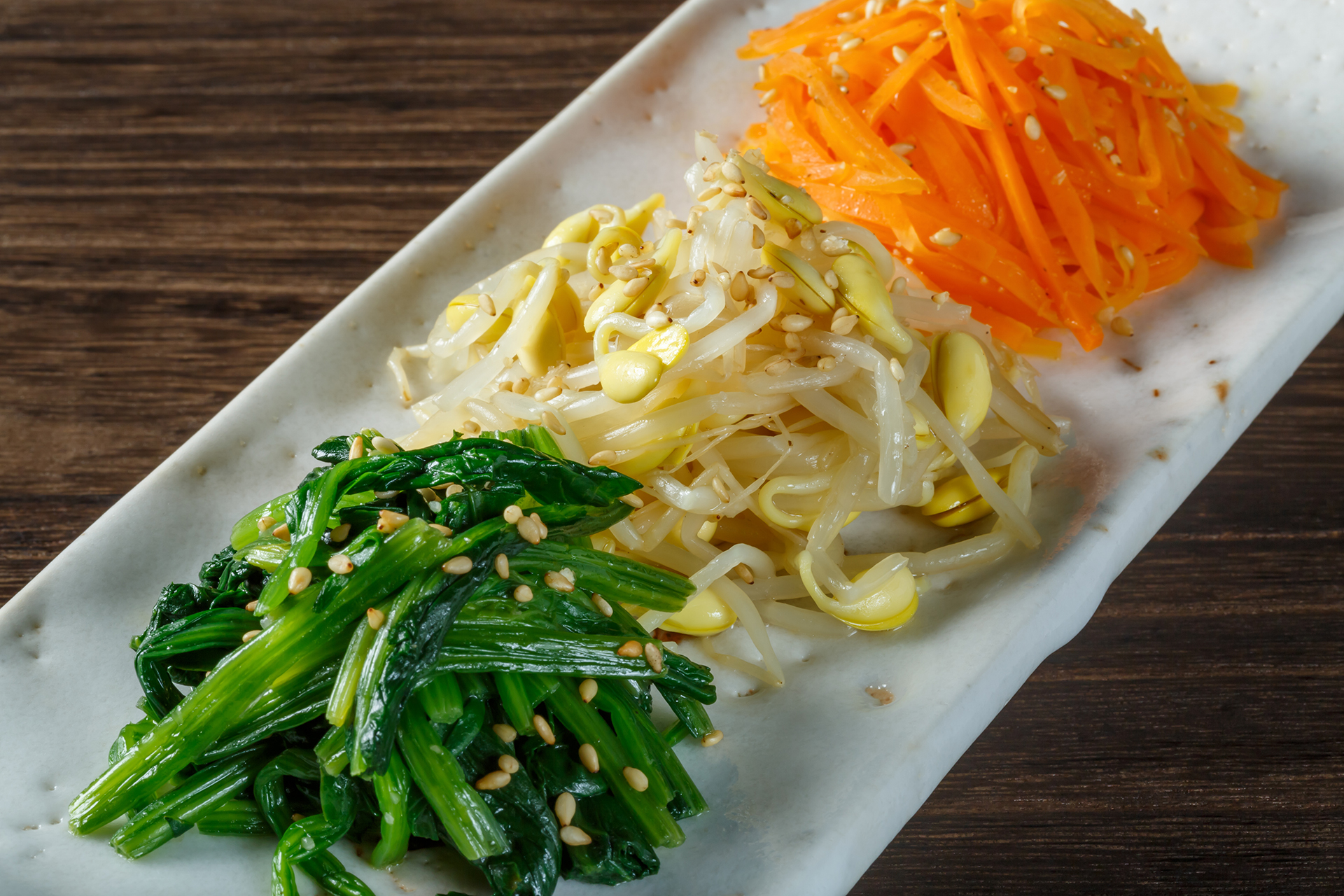
Korea is typical of a traditional rice-growing region where a large population lives in a small country. That’s because rice requires a lot of labor, and at the same time, is capable of feeding a large population. And meat was always in short supply. Instead, it was taken for granted that vegetables could be grown and wild greens and mushrooms gathered from the vast grasslands and mountains that make up nearly 70% of the country. These became suitable side dishes for rice. I hope you’ll eat rice with these side dishes if you see them on the table when you’re eating a Korean meal. Because that’s the way it’s meant to be experienced. That’s the whole intention behind side dishes. These “grassy” side dishes are always on the table, so they’re quite common, free at restaurants and are all-you-can-eat. But there’s long been a ruling perception that restaurants ought to be a place you go to to eat meat, not “grass.” After all, you can have your fill of that at home, right? So why would you pay for it? That’s been the prevailing perception. Because of that, restaurants rarely offer separate vegetarian options.
A lot of times, it’s not a pleasant experience for a vegan (that is, full vegetarian) to go to a restaurant in Korea. For vegans, even the kimchi that’s set on the table for every meal is prohibited. Why? Because the sauce that gives kimchi its taste is made with shrimp and anchovies. It’s hard to find anything at Chinese restaurants that doesn’t contain chicken or pork. They used to have a lot of vegetable-based items on their menu that Chinese people traditionally like as well, but they wound up focusing on meat to address the skepticism I mentioned before about going out to a restaurant just to eat greens. And the popular dish jjamppong, filled to the brim with seafood, actually has a meat-based broth. What about Japanese restaurants? In Korea, they’re where people go to eat sashimi, so there’s no vegetarian food. That’s the way it goes. Where you’ll find they’re taking care to provide vegetarian options is at Western restaurants. It’s extremely rare for them to have any options outside of a salad, though. As a chef who cooks Italian food, I used to come up with and prepare vegetarian meals, but I quickly gave up on that. Because there was no one ordering them. The reason is that people go to Western restaurants (Italian included) for steak and pasta. Vegans who visit my restaurant order salad and, although it’s not on the menu, aglio e olio. There’s plenty of delicious vegetarian dishes made from vegetables and grains, but they can’t be made on the spot.
Surprisingly, though, this situation is gradually changing. The number of vegetarians (and, by extension, vegans) in Korea is increasing significantly. In fact, when you go to a bapjip, or a Korean restaurant that serves rice and simple side dishes, they have quite a few vegan options. If you add doenjang to lettuce, or have any kind of namul side dish like kongnamul or chamnamul, it can, without a doubt, be made 100% vegan. If there’s japchae, you can order it without meat. Doenjjang jjigae, originally a vegetarian stew through and through, was later overloaded with anchovies and meat, radically altering the dish to achieve its current savory taste, but you can ask for it to be cooked without meat and it’ll still taste great. Korea has also always had a certain population of very strict vegetarians. The Buddhist monks who dedicate themselves to spiritual self-improvement and eat temple food are the classic example of vegans. Temple food largely preserved the idea of vegetarian food, which was developed under the food eaten at temples. Also known as jeolbap, it’s very popular with people who are looking for healthy food that emanates meditative energy. There’s a restaurant in the middle of Seoul that serves this jeolbap, and for years it even earned itself some Michelin stars. Some jeolbap is simple, but a lot of it is surprisingly elaborate and complex. Since it’s not possible to use cheat codes like meat or fish, those preparing it go to great lengths and considerations to make the food appetizing with less savory ingredients. They often use two or three techniques in tandem, such as drying in the sun, pickling, and frying or baking. It’s so good that, as soon as it touches your tongue, you’ll wonder if it’s really made without meat.
There’s something important I forgot to mention. If you’re pescatarian and still eat seafood, Korea is a whole other world. Koreans love seafood and eat a ton of the stuff. It suits us just fine, so we have no problem eating it three times a day. Even though the number of meat-based side dishes has increased, your typical roadside Korean restaurant (barbecue places excluded) still always has the best fish and vegetarian side dishes. Of course, kimchi is fantastic, too, if you’re not averse to fish-based sauces. Even more encouragingly, while Korea isn’t quite vegan-friendly just yet, more and more restaurants are slowly coming around to selling the food.
-
 ©️ Shutterstock
©️ Shutterstock
TRIVIA
Namul (culinary herbs)
Namul are central to Korean vegan food. All that’s needed is to blanch vegetables that can be found in the grasslands and mountains like young sprouts, spinach, bean sprouts and pumpkins in water, season with oil and salt, and you’re done. And throw in a little garlic, naturally. It’s healthy and tastes great. The bibimbap garnish that you like or are probably at least familiar with is actually given its taste by these namul. Namul are a veritable treasure island for vegans.
Unauthorized reproduction and distribution prohibited.
- [NoW] Modern Korean Cuisine2021.05.14

- [NoW] Korean Barbeque2021.06.11

- [NoW] Fusion food in Korea2021.07.09

- [NoW] Pyongyang naengmyeon season2021.08.06
